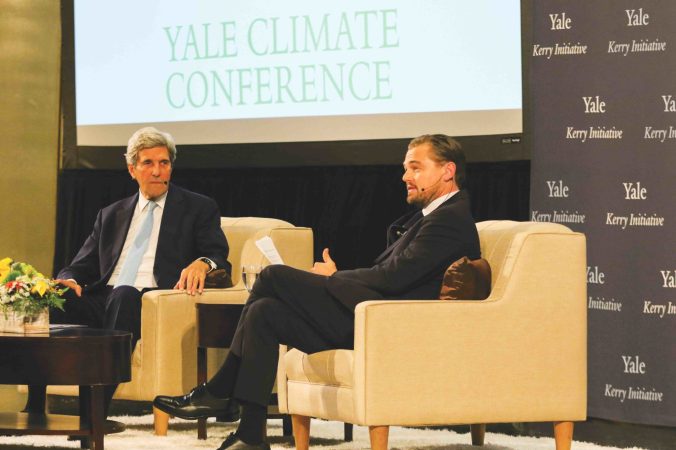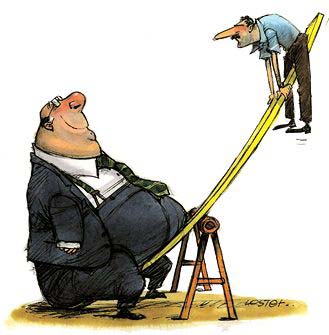What does road paving have to do with Climate Change? Well, as much as I wish we had a better solution, for the foreseeable future anyway, we are going to need roads. And if we are going to need roads we are going to need to find cheaper and cleaner ways to make and keep them smooth. 
If you are like me you take a smooth ride in your car for granted. Driving is a little bit like life – the only time you notice it’s not smooth is when you hit a pothole. In colder climates like New York and the northeast maintaining smooth roads is much more difficult than other places. Dozens of times each year the temperatures fluctuate from freezing temperatures to thawing.
As the water turns to ice, through the miracle of changing molecular structure, the flexible fluid converts to an expanding and rigid molecule. The expansion of water which has slithered into small cracks and crevices acts like the opening of a vice. It slowly breaks road surfaces open and creates potholes and cracks which become worse with time, wear and further freezing and thawing. This is just one of the reasons the cost of government is higher in colder environments.
The problem of keeping roads smooth is a perpetual battle against the “law of entropy.” It is a problem of local governments everywhere but it is most difficult where temperatures go below freezing.

Some places get started freezing and thawing early,.
If we look at the map of the US with the earliest freeze date we get an idea of where the local governments are the busiest filling potholes and cracks.
According to the American Road and Transportation Builders (http://bit.ly/2E0veAn) There are 2.7 million miles of paved roads in the United States and 77% of all roads are the responsibility of local government. If Mayors and County Executives can’t keep the roads smooth then America is in for a bumpy ride. Adding to the challenge of maintaining that smooth cross-country ride is that 1.18 Million miles of roads are in urban areas and many city governments are already burdened with the high cost of healthcare and pensions for their employees.
The challenge of maintaining smooth roads presents an opportunity for innovation. Let’s look at how road paving has traditionally occurred:
- Roads are mechanically milled down various depths (2”-3”) using fossil fuel powered vehicles. Millings are trucked away in diesel trucks creating traffic.
- Millings are often stockpiled in high, unsightly mounds with no reuse and if they are reused they must be trucked on those same dirty diesels.
- The new stone is quarried often at great distances from the asphalt plant and trucked to the plant creating more pollutions and traffic congestion.
- The asphalt plant receives shipments of crude oil shipped from around the globe using large ships, pipelines, and trucks.
- The oil products and stone are combined using a tremendous amount of energy to create new asphalt.
- Asphalt is then shipped by diesel trucks to the site of paving and multiple vehicles apply the new asphalt. Then all the trucks return to do it all again and again.
We literally move heaven and earth for a smooth ride. Even a cursory examination shows that this is an energy intensive, traffic and pollution producing system. We’ve got trucks, fossil fuels, ships, equipment running all over the place. What if we could just take the asphalt that’s there and remake it, rejuvenate it, put it back down and roll it smooth? Well, we can and we do. The process is called Hot In Place Recycling.
Hot In Place Recycling (HIPR) is exactly what it sounds like. A new, smooth road surface is created right in place. Massive machinery crawls down a road like a fire-breathing dragon. It gobbles a lane at a time, grinding up about 3 inches of the existing road, reheating it, rejuvenating it, spreading it and rolling it smooth all in one fell swoop!
Nothing is wasted and little new material is needed, traffic keeps moving and the biggest problem you have is parking the vehicles overnight (they are pretty big) and protecting street trees from the heat. It is a terrific product that saves money and fights climate change. It has been researched and gets good reviews.
One place that has used this and studied it objectively is Wisconsin. Look at the map above and find Wisconsin. If you’ve ever seen a Packers game televised from Lambeau Field in Green Bay you already have a pretty good image of tough, “cheese-head” conditions.

Wisconsin know freezing and thawing very well
So confidence is high with The State of Wisconsin DOT who thoroughly examined Hot In Place Recycling.
Wisconsin DOT found:
- HIPR recycles 100 percent of the existing pavement reducing the need for new aggregate and asphalt.
- Uses less energy than other rehabilitation methods…
- HIPR does not require transportation of large quantities of new material to the job site resulting in fewer traffic disruptions from trucks entering and leaving the work area (and less pollution).
- HIPR lay down temperatures are lower than conventional HMA (Hot Mix Asphalt, new from the plant) and the paving train moves slower. Both of these factors reduce the length of lane closures as compared to conventional HMA. The shorter lane closures mean traffic can pass through the work area more quickly, reducing delays.
- The initial cost of HIPR pavement is less than traditional HMA.
You can find their full report at: (https://www.wsdot.wa.gov/research/reports/fullreports/738.1.pdf).
The carbon footprint reduction for HIPR is enormous. Somebody really should quantify it because recycling asphalt virtually eliminates the need to strip mine gravel, transport raw materials, depend on foreign oil, clog roads with hundreds of diesel trucks or tie up traffic for extended periods of time.
Best of all, it is much cheaper. Most estimates are that it is at least 40% less expensive even after an additions seal coat is applied. In my experience in the City of Bridgeport, we paid approximately$8/square yard of pavement for this green alternative as compared to $19/per square yard of conventional, HMA paving. We nearly doubled the number of roads we could make smooth and we dramatically cleaned the air and reduced our greenhouse gas emissions.

Highway Rehab Corporation
A Buffalo, NY company, Highway Rehab Corporation, has been a pioneer in this innovative way of keeping our roads smooth. Here is a pretty cool slideshow with lots of information about the technology. https://www.youtube.com/watch?v=nacnL06oggs
And here is a terrific video http://bit.ly/2C0Agj0 by Chris Lubbers an Asphalt Industry Expert.
Fighting Climate Change requires us to look at all we do and to change. We can cut carbon and cut costs and live happily ever after!

Bill Finch






 (
(


 In his book co-authored by Sierra’s Carl Pope, Bloomberg asserts “America’s ability to meet our Paris climate pledge doesn’t depend on Washington.” It will, most at this Climate Week event agreed, depend on Mayors, government officials, business leaders and each and every one of us. We can fight climate change one person, one community, one business at a time.
In his book co-authored by Sierra’s Carl Pope, Bloomberg asserts “America’s ability to meet our Paris climate pledge doesn’t depend on Washington.” It will, most at this Climate Week event agreed, depend on Mayors, government officials, business leaders and each and every one of us. We can fight climate change one person, one community, one business at a time. “Everyday they go to work they need to know what they are going to do, what they are going to believe in. Let’s get them to decrease the cost of wind, let’s get them to drive down the cost of solar to 3 cents a KWh, get electric storage costs down – that way they can survive no matter who’s president.”
“Everyday they go to work they need to know what they are going to do, what they are going to believe in. Let’s get them to decrease the cost of wind, let’s get them to drive down the cost of solar to 3 cents a KWh, get electric storage costs down – that way they can survive no matter who’s president.” 

 These are all things that create economic growth and jobs, expanded tax base, clean the air and earn a great reputation. There are many, many more strategies to be developed, shared and put in action.
These are all things that create economic growth and jobs, expanded tax base, clean the air and earn a great reputation. There are many, many more strategies to be developed, shared and put in action.